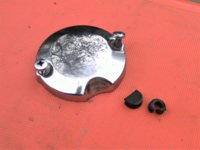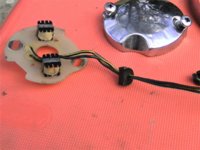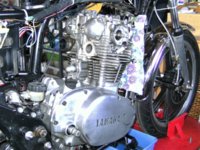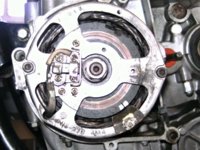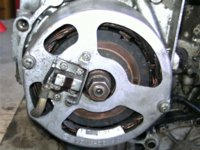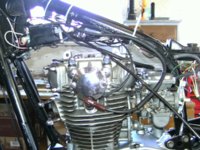5T, once again indebted for your wisdom & experience. I don't intend to refit the sprocket, or at least not to tighten it, until I have the motor back in the frame. So that I can fit the chain to hold things. But I will make a note to use sealer as you show.
At the moment, just taking my time and doing little jobs. Today, attended to the engine wiring. It had the 6-way block connector, but my revised system uses bullet connectors. So, hacked the block off and fitted bullets. Even added a spot of solder on each to hopefully ensure good continuity. Then replaced the brittle old sleeve with a length of heat shrink. Have put the harness clip back in its proper place and peened the casting to hold it.
This lockdown means plenty of time . . .
At the moment, just taking my time and doing little jobs. Today, attended to the engine wiring. It had the 6-way block connector, but my revised system uses bullet connectors. So, hacked the block off and fitted bullets. Even added a spot of solder on each to hopefully ensure good continuity. Then replaced the brittle old sleeve with a length of heat shrink. Have put the harness clip back in its proper place and peened the casting to hold it.
This lockdown means plenty of time . . .


